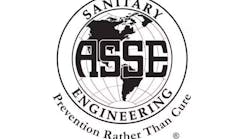As many building superintendents would attest, the first indication of an indoor climate problem usually is a complaint from a tenant that a living or working space is too cold during winter, too hot during summer, or a combination of both year-round. Resulting HVAC-system adjustments may include the installation of larger pumps, the resizing of components, the changing of night-setback and morning startup times, and flow adjustments in mains, branch lines, and circuits. Often, such “fixes” are ineffective and costly. For example, resetting a workplace HVAC-system startup time from 7:30 a.m. to 5:30 a.m. means that a plant operates at capacity for two additional hours a day. This works out to a 25-percent increase in energy consumption, which cancels out the energy savings night setbacks were designed to achieve. Additional consequences include increased wear on pumps and HVAC components and reduced control-valve authority.
Indoor temperature and climate problems typically are not caused by control malfunctions or sizing errors. Often, they can be traced to incorrect flow rates attributable to improper terminal-unit balancing. Because engineers typically design HVAC systems with excess capacity, the ability to provide necessary heating or cooling energy is present. Getting that energy to terminal units and air-handling units (AHUs) is the challenge. Therefore, the key to HVAC-system effectiveness and efficiency is properly controlling flows from production and delivery units to terminal units.
BALANCING FOR COMFORT AND CONTROL
Balancing valves maintain flow conditions so that control valves may function properly, providing correct flows to heat-transfer coils, which results in the correct output of energy to a space.
HVAC-system flows are dynamic, changing throughout a typical 24-hr period. Because of heat gain from the sun and changes in building occupancy, the demand for heating and cooling varies not only throughout the day, but by building sector. An effective and efficient HVAC system must provide correct energy output when and where required. Proper hydronic balancing is the key to making an HVAC system perform properly and most cost-effectively.
Circuit balancing is essential to ensuring that heating and chilled-water systems deliver correct flows to all terminal units in an HVAC circuit. In an unbalanced system, sectors of a building will have underflow or overflow conditions that impact control-valve authority and, thus, indoor climate. For example, areas closest to an energy-production and delivery source could receive excess flow, resulting in excessive heating or cooling. On the other hand, areas farthest from an energy-production and delivery source could receive insufficient flow, resulting in inadequate heating or cooling.
Each degree-Fahrenheit increase in thermostat setting can add 6 percent to a building's heating costs, while each degree-Fahrenheit decrease can add 8 percent to a building's cooling costs.
A typical HVAC circuit includes balancing valves for each terminal-unit coil and AHU. To balance a coil using a manual balancing valve, a technician needs to connect a differential-pressure gauge or handheld circuit-balancing instrument to the valve's two metering/test ports. Based on the size of the valve, the position of the handwheel, and the differential pressure, the rate of flow through the balancing valve can be determined readily with a balancing instrument, balancing flow wheel, or the valve's constant-volume characteristics. The required system flow rate then can be provided with an adjustment of the handwheel. Applying this technique to each balancing valve will achieve proper balance throughout a system so that all circuits receive specified design flows for optimal performance. When pumps, chillers, and other components operate at the lowest possible load, owners benefit from less wear and tear, longer equipment life, and lower energy and maintenance costs.
MANUAL BALANCING VALVES
Engineers and contractors have a variety of manual-balancing-valve configurations from which to choose for HVAC circuit-balancing and control applications. Throttling characteristics — the relationship between a valve's adjustment range and flow rate — vary by valve type and are a key determinant of a valve's ability to be set to a desired flow; they must be verified using the balancing technique previously described.
For example, a quarter-turn ball valve provides 90 degrees of throttling-adjustment range, while a four-turn globe valve provides 1,440 degrees of throttling-adjustment range. Consequently, many engineers specify Y-pattern globe valves.
Depending on their size, globe valves can offer full throttling ranges with two, four, eight, 12, or 16 handwheel turns and enable users to obtain accurate readings of up to one-tenth of a handwheel turn. Some manufacturers provide vernier scales, digital readouts, concealed memory and locking, tamperproof settings, and other features to enhance flow-rate accuracy and controllability.
REAL-TIME MEASUREMENT AND CONTROL
Optional pressure-drop sensors and balancing software programs are available. Additionally, some handheld circuit-balancing instruments integrate pressure-drop sensors and microprocessors, enabling contractors to perform circuit balancing without flow charts and pressure-drop calculations.
ISOLATING SYSTEM TROUBLE SPOTS
Insufficient or excessive heating or cooling typically is caused by an improperly adjusted balancing valve, a clogged strainer/coil, or other system issue changing the specified rate of flow through a coil or an AHU. Diagnostic analysis can be performed readily by checking the rate of flow through a balancing valve. Moreover, issues can be identified during building commissioning and before tenant move-in.
In addition to providing a comprehensive record of specified and actual flows, circuit balancing helps simplify the setup and monitoring of control equipment. This reduces capital costs, as well as the time needed for commissioning.
CONCLUSION
Far too many buildings are plagued by temperature variations that can lead to tenant complaints and high energy and operating expenses. In most cases, these faults can be resolved easily through proper balancing of the heating or cooling system in conformance with original performance specifications.
In addition to ensuring occupant comfort and minimizing energy and operating costs, effective circuit balancing can help determine the causes of improper heating and cooling. A comprehensive circuit-balancing program should be integrated into commissioning to save time and energy and improve the long-term value of a building.
For past HPAC Engineering feature articles, visit www.hpac.com.
A senior product engineer for Victaulic Company Inc., David L. Hudson is a practicing mechanical engineer with more than 26 years of experience. He can be reached at [email protected].
Throttling Characteristics
Generally, the higher the number of handwheel rotations, the more precise the flow control. The figure below illustrates the throttling characteristics of 90-degree (quarter-turn), 360-degree (full-turn), and 1,440-degree (four-turn) balancing valves.
To achieve a 30-percent change in flow:
-
A 90-degree, fully open-to-closed valve would require a 12-degree adjustment.
-
A 360-degree, fully open-to-closed valve would require a 96-degree adjustment.
-
A 1,440-degree, fully open-to-closed valve would require a 408-degree adjustment.








